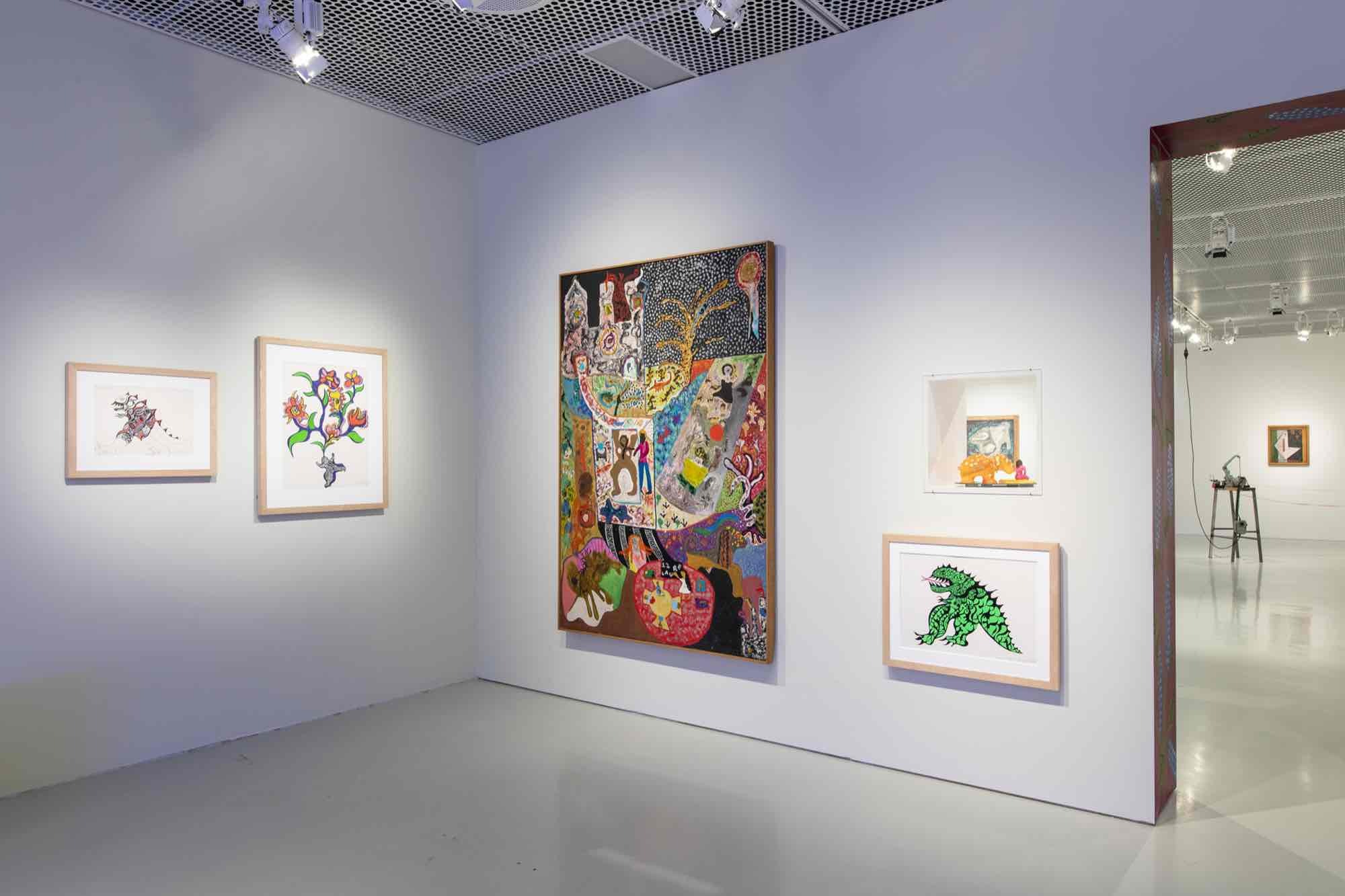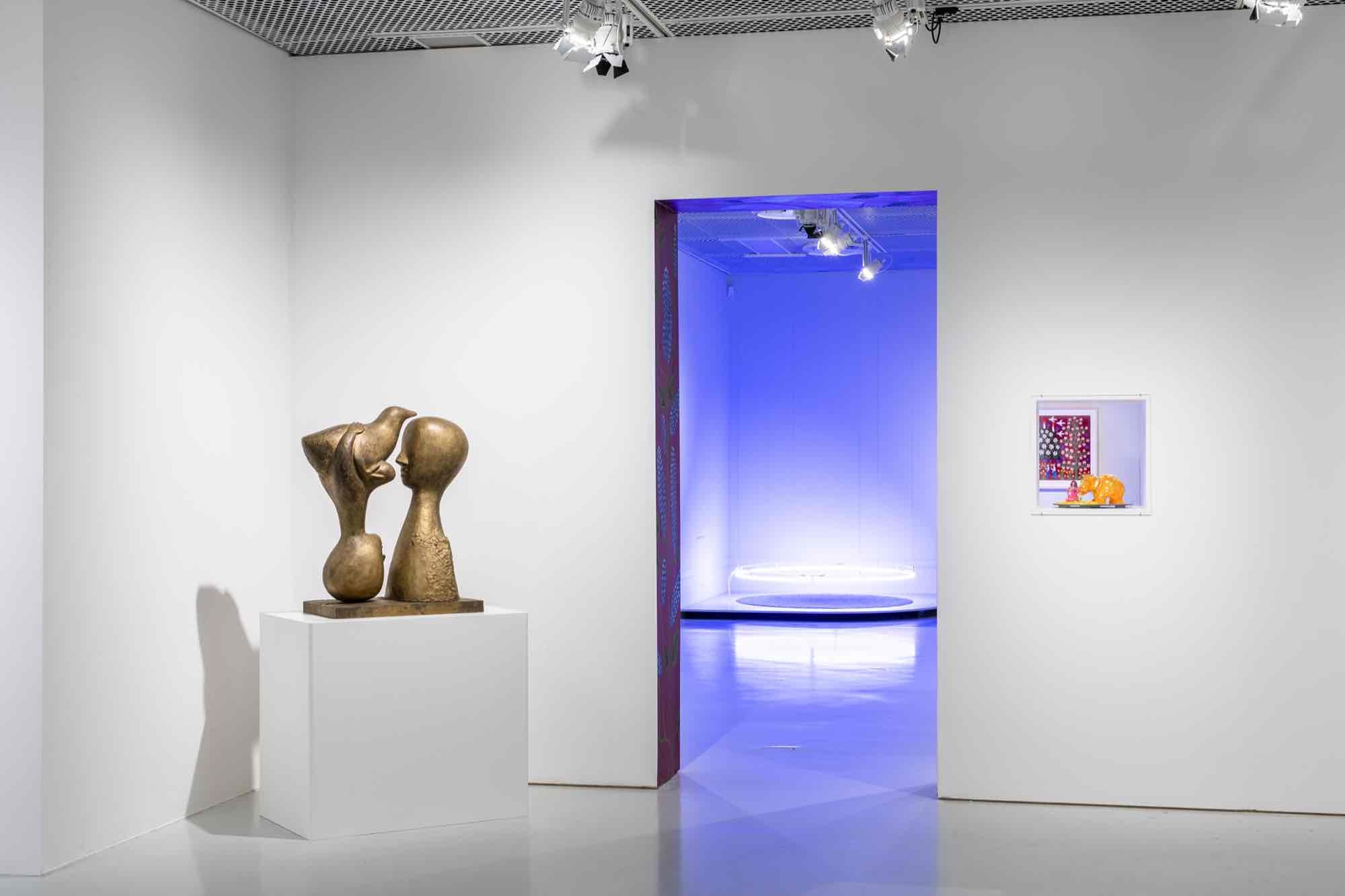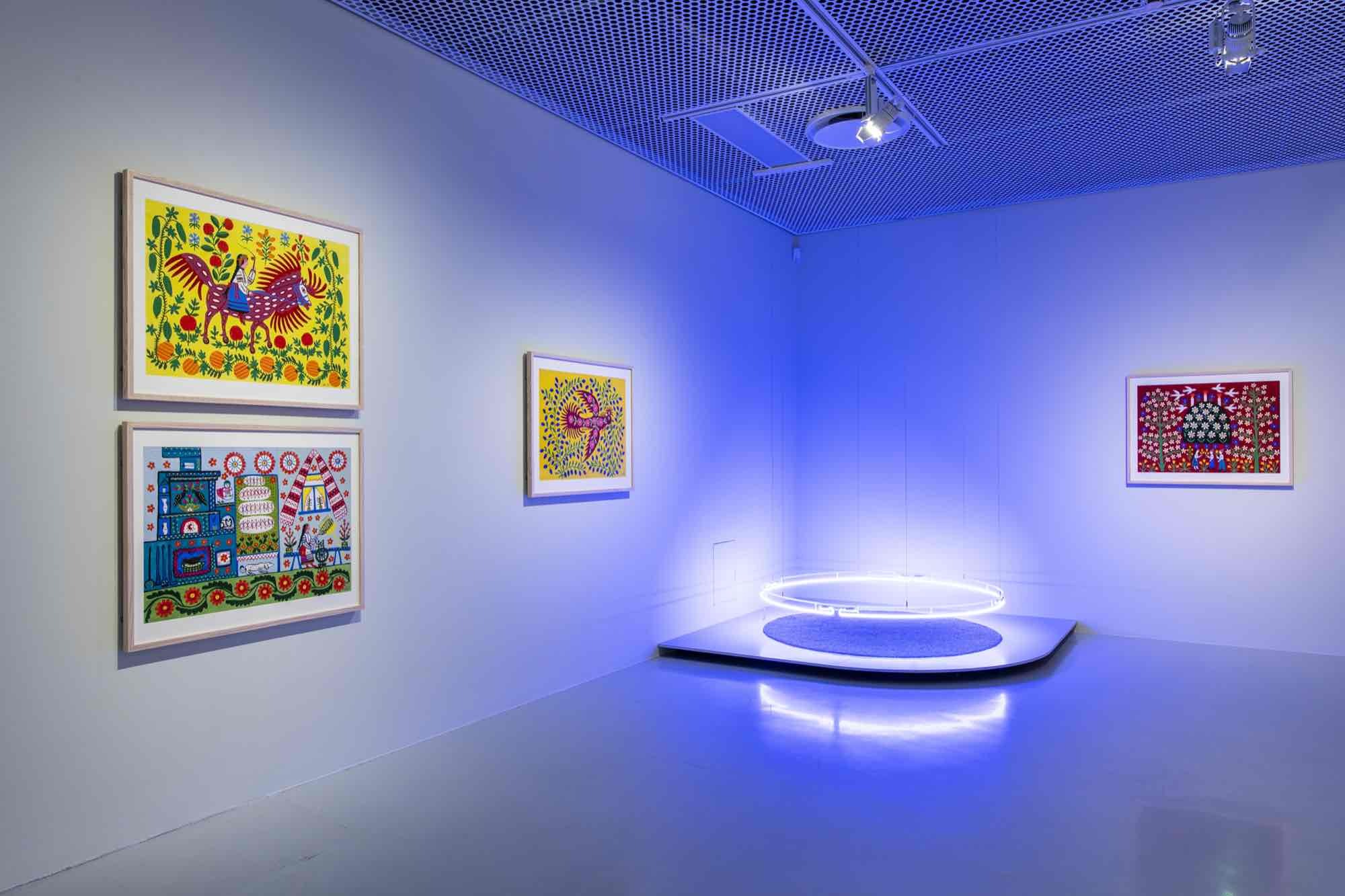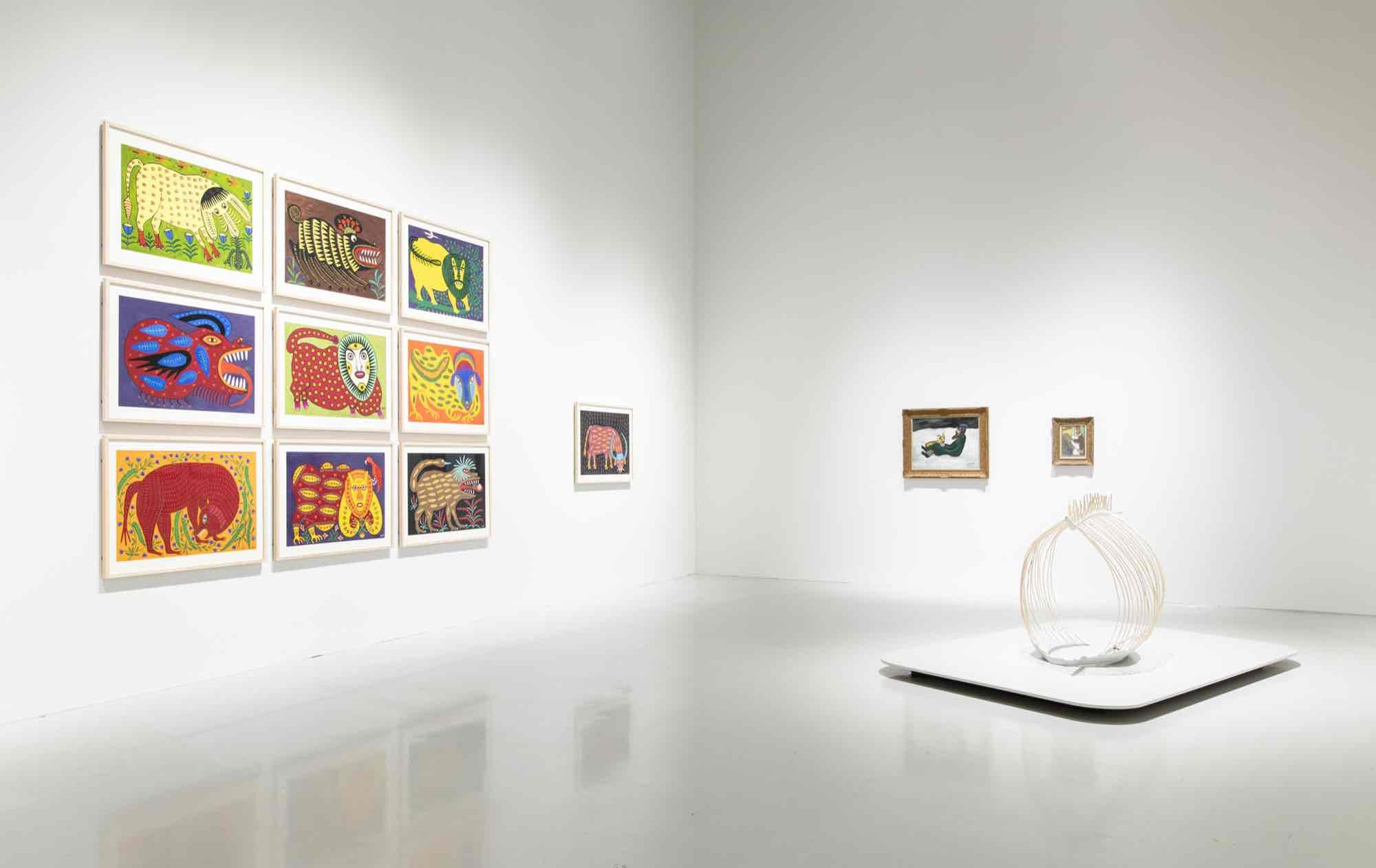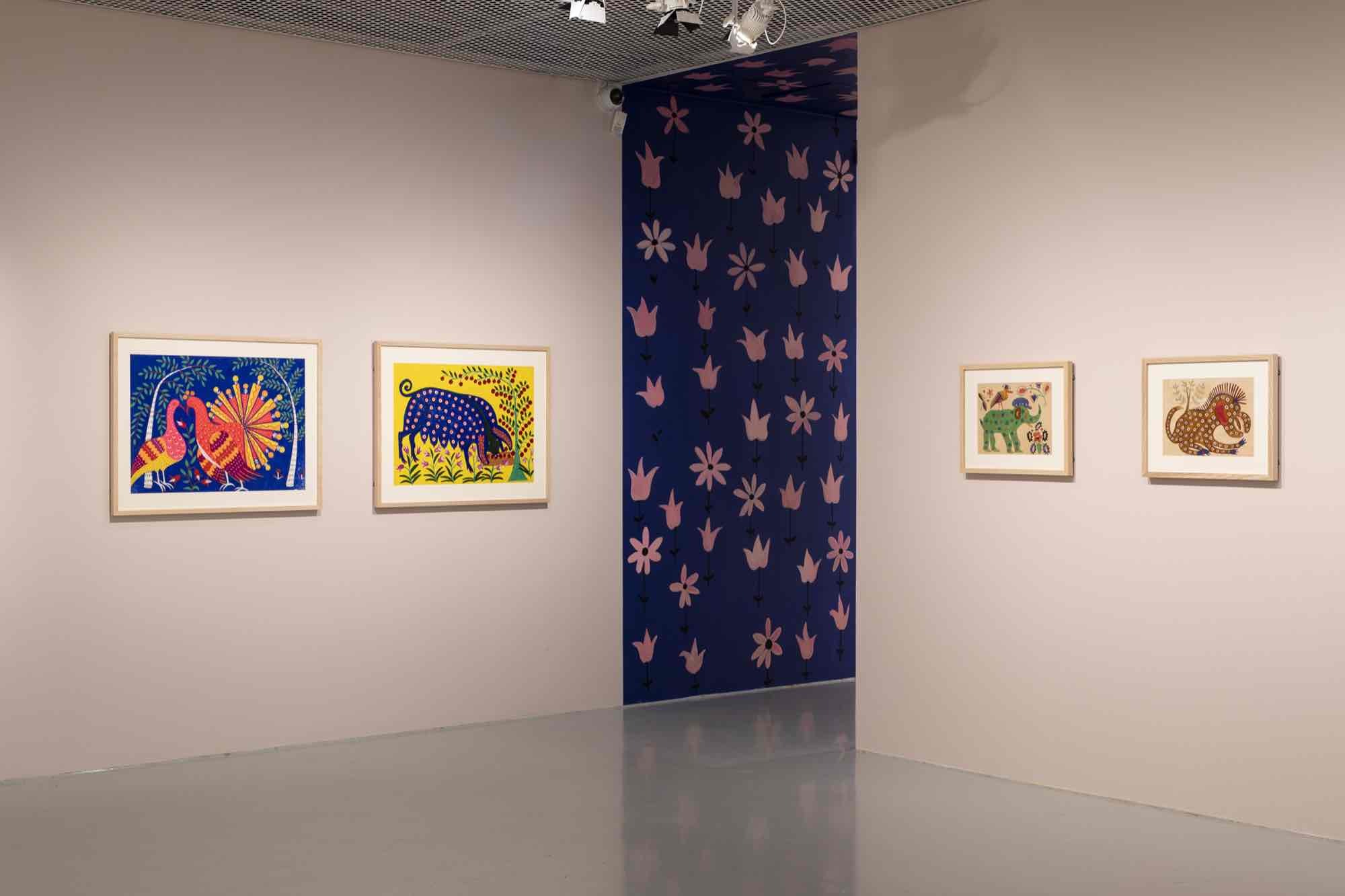THE FANTASTIC AND HORRIFIC
Maria Prymachenko and Works from the Moderna Museet Collection
21 Sep 2024 - 30 Mar 2025

Installation view with The Persistant Action of a Falling Tear, 2023 and Gernikako Argia/ The Light of Guernica, 2023 , Runo Lagomarsino, 2024 Photo: Helene Toresdotter
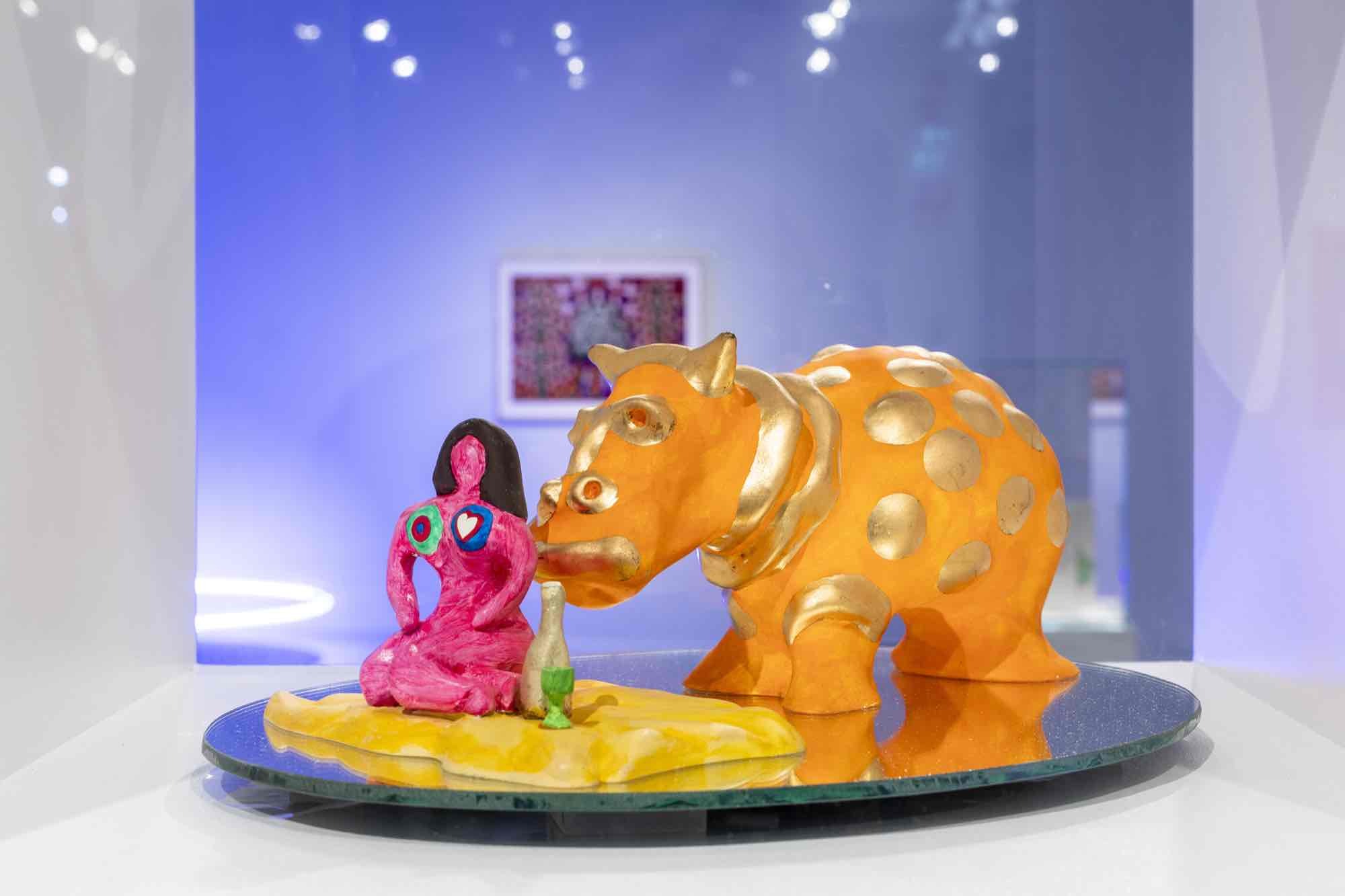
Installation view with Portrait de Marina, 1995, Niki de Saint Phalle, 2024 Photo: Helene Toresdotter
Curator: Elisabeth Millqvist, director of Moderna Museet Malmö
Maria Prymachenko (1909–1997) is a central figure in Ukrainian art history, as one of the country’s most well-known and appreciated artists. Her stylized yet playful paintings have their origins in knowledge and traditions from embroidery and handicraft, which she expanded into her own distinctive world of motifs and expression.
Participating artists: Alexander Calder, Marc Chagall, Lena Cronqvist, Lourdes Fernandez, Susanna Marcus Jablonski, Asger Jorn, Runo Lagomarsino, Lou Laurin-Lam, Egon Möller-Nielsen, Amelia Peláez del Casal, Pablo Picasso, Lars Pirak, Niki de Saint Phalle, Maria Prymachenko, Max Walter Swanberg, Adja Yunkers.
Welcome to a press preview on 19 September at 09.30. The preview is arranged in collaboration with Malmö Konsthall, which is opening the exhibition “Life as Cloth” with Lenke Rothman.
The nature around her, everyday life and celebrations, fairy tales and folk songs are part of Maria Prymachenko’s painted world, expressed in pictures and poetic titles that give an expanded meaning. The artist exhibited extensively and started an informal school. During Prymachenko’s lifetime, folk art was encouraged and used for various political purposes. After gaining attention and receiving an invitation to the experimental workshop in Kyiv’s city museum she met and worked with the artists of her time and increased her choice of materials.
In the exhibition, Maria Prymachenko’s paintings meet 20th-century works from the Moderna Museet Collection and works by two contemporary artists, Runo Lagomarsino and Susanna Marcus Jablonski. Artists such as Marc Chagall, Egon Möller-Nielsen, Niki de Saint Phalle, Lou Laurin-Lam and Pablo Picasso reinforce the presence of myth, metamorphosis and narratives.
“Together, the artworks constitute a brilliantly coloured lament,” says the exhibition curator Elisabeth Millqvist.
Paintings on paper became Maria Prymachenko’s primary mode of expression, and now more than 40 of her works, created over a period of 50 years are presented. Despite a life of vulnerability and personal losses, Prymachenko celebrates life in her art. She depicts agricultural traditions and paints luxuriant plants, but among her motifs there are also beasts – hybrid creatures with sharp claws, staring eyes and gaping mouths.
The exhibition proceeds from the fact that both Pablo Picasso (1881–1973) and Maria Prymachenko participated in the International Exposition in Paris in 1937. That was where Picasso showed his painting Guernica, which, like many of Prymachenko’s artworks, has become a symbol of peace. Several of the works that Prymachenko exhibited in 1937 are included in the exhibition. Besides war, Prymachenko experienced famine and catastrophe. She was born in Bolotnya in the Polesia region, 50 km from Chernobyl, which has become synonymous with the nuclear disaster. In the titles she gives to her works she comments on the world around her, prays for peace and curses war, and addresses individuals and politicians, as in the title from 1986. “Mister Reagan, look at this picture and understand how heavy and burdensome and foolish the atom is. Take a look and make peace with us so there will be peace on Earth.”
Maria Prymachenko (1909–1997) is a central figure in Ukrainian art history, as one of the country’s most well-known and appreciated artists. Her stylized yet playful paintings have their origins in knowledge and traditions from embroidery and handicraft, which she expanded into her own distinctive world of motifs and expression.
Participating artists: Alexander Calder, Marc Chagall, Lena Cronqvist, Lourdes Fernandez, Susanna Marcus Jablonski, Asger Jorn, Runo Lagomarsino, Lou Laurin-Lam, Egon Möller-Nielsen, Amelia Peláez del Casal, Pablo Picasso, Lars Pirak, Niki de Saint Phalle, Maria Prymachenko, Max Walter Swanberg, Adja Yunkers.
Welcome to a press preview on 19 September at 09.30. The preview is arranged in collaboration with Malmö Konsthall, which is opening the exhibition “Life as Cloth” with Lenke Rothman.
The nature around her, everyday life and celebrations, fairy tales and folk songs are part of Maria Prymachenko’s painted world, expressed in pictures and poetic titles that give an expanded meaning. The artist exhibited extensively and started an informal school. During Prymachenko’s lifetime, folk art was encouraged and used for various political purposes. After gaining attention and receiving an invitation to the experimental workshop in Kyiv’s city museum she met and worked with the artists of her time and increased her choice of materials.
In the exhibition, Maria Prymachenko’s paintings meet 20th-century works from the Moderna Museet Collection and works by two contemporary artists, Runo Lagomarsino and Susanna Marcus Jablonski. Artists such as Marc Chagall, Egon Möller-Nielsen, Niki de Saint Phalle, Lou Laurin-Lam and Pablo Picasso reinforce the presence of myth, metamorphosis and narratives.
“Together, the artworks constitute a brilliantly coloured lament,” says the exhibition curator Elisabeth Millqvist.
Paintings on paper became Maria Prymachenko’s primary mode of expression, and now more than 40 of her works, created over a period of 50 years are presented. Despite a life of vulnerability and personal losses, Prymachenko celebrates life in her art. She depicts agricultural traditions and paints luxuriant plants, but among her motifs there are also beasts – hybrid creatures with sharp claws, staring eyes and gaping mouths.
The exhibition proceeds from the fact that both Pablo Picasso (1881–1973) and Maria Prymachenko participated in the International Exposition in Paris in 1937. That was where Picasso showed his painting Guernica, which, like many of Prymachenko’s artworks, has become a symbol of peace. Several of the works that Prymachenko exhibited in 1937 are included in the exhibition. Besides war, Prymachenko experienced famine and catastrophe. She was born in Bolotnya in the Polesia region, 50 km from Chernobyl, which has become synonymous with the nuclear disaster. In the titles she gives to her works she comments on the world around her, prays for peace and curses war, and addresses individuals and politicians, as in the title from 1986. “Mister Reagan, look at this picture and understand how heavy and burdensome and foolish the atom is. Take a look and make peace with us so there will be peace on Earth.”

